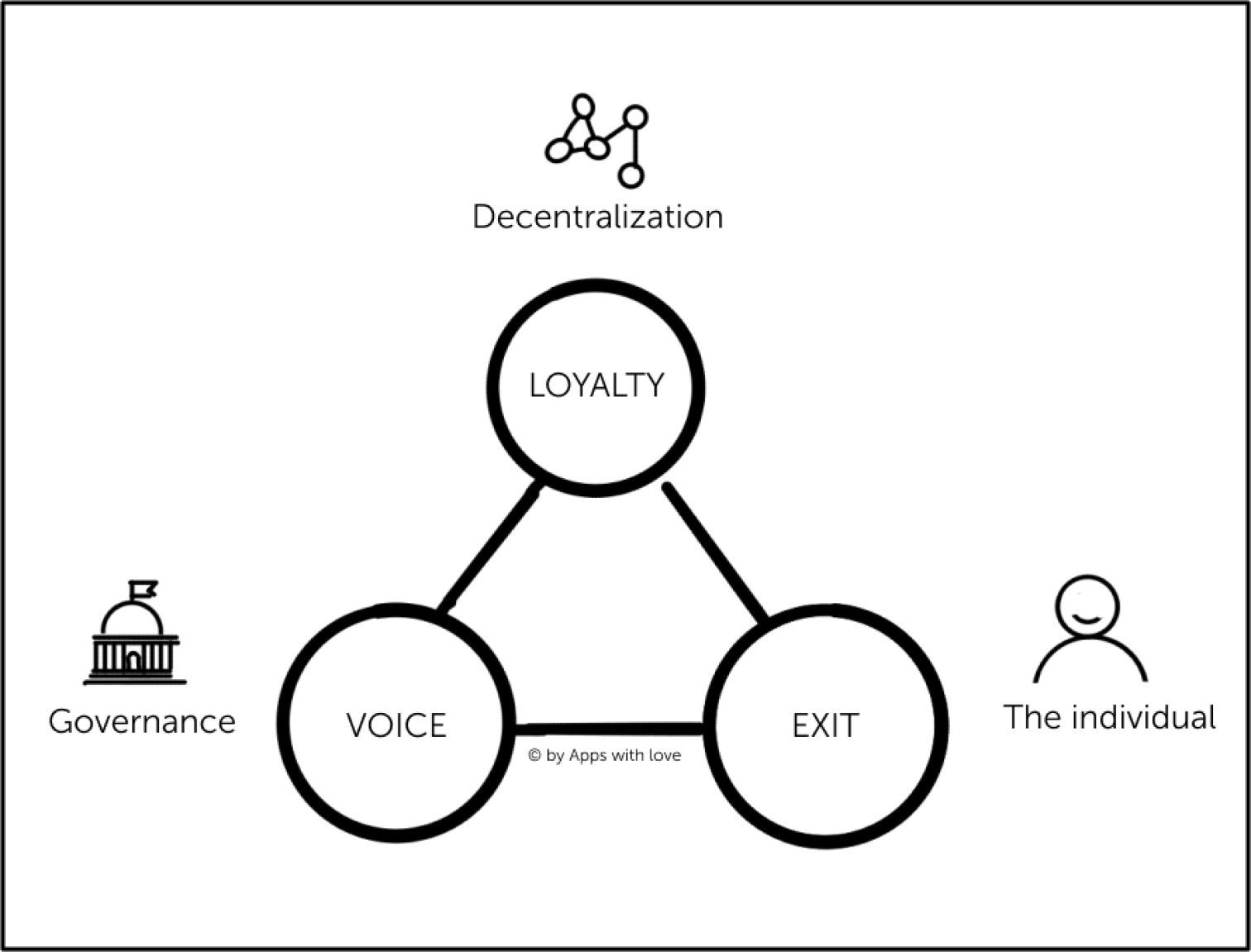The DAO Tension Triangle is comprised of three components:
Decentralization (Loyalty): In a DAO, decentralization is not just a technical goal but also a political one. It represents a belief system that members hold to maintain their loyalty to the DAO. The degree of decentralization varies among DAOs and is determined by their purpose, capabilities, and participation costs.
Individual (Exit): An individual who values individual rights and power, self-governance, and the greater good but also wants their individual rights upheld. This definition can extend to include registered or unregistered corporations that operate under their land's jurisdiction and are legally defined as individuals.
Governance (Voice): Governance rules govern a DAO's legal structure, operations, purpose, membership, on-chain and off-chain voting, and all aspects that allow for its creation and dissolution.
More details about the DAO tension triangle you can read in the first blogpost about this subject: DAO 101 - Introduction to Decentralized Autonomous Organizations
As you may know, Decentralized Autonomous Organization (DAO) operates through decentralized decision-making, where a central authority figure does not make decisions for the organization. Instead, the collective group of individuals within the organization possesses the right to vote and make decisions digitally. However, in order to create a sustainable community it is essential to design the right balance between those tensions explained above as well as a smart approach for your DAO Voting Model.
If you are interested to read more about the different use cases, types and examples of DAOs, check out this blogpost: Use Cases and different Types of Decentralized Autonomous Organizations (DAO)
